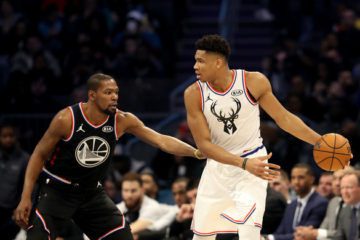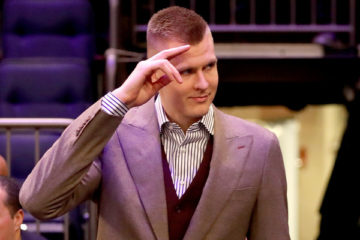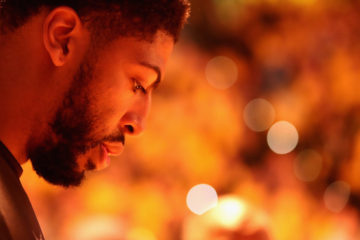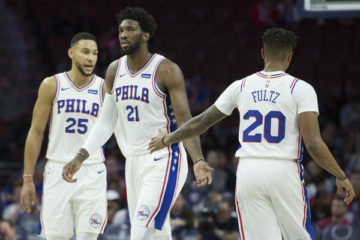Fantasy Basketball 2013-14: In The Bonus – Waiver Targets Week 10 – The Inactives
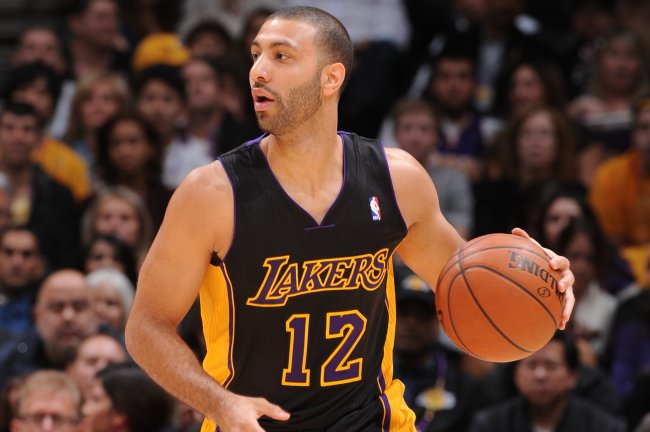
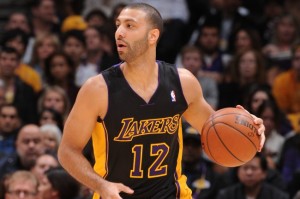
Last week, we made “Fantasy New Year’s Resolutions,” but whether we’re resolved to get in shape, save money, or do whatever it takes to win our fantasy leagues, these resolutions are often all too quickly forgotten. The truth is that the further we delve into the fantasy regular season, the more fantasy owners become less involved with their teams. In looking for the positive side to this, their inattentiveness opens the door for the contenders to blowout more teams and leaves the wire further stocked with talent. That’s where it gets tough and annoying for the contenders. You like all the players on your team, but a nice player is floating in free agency. You hope that a lesser team will swoop him up but normally it’s a league rival instead. This is another reason to stay active for the sake of your league mates, even when you’re out of the playoff hunt. Now once the playoffs begin and you’re on the outside looking in, then yes, you do stop making add/drops. In most cases though, teams becoming inactive is inevitable and thus makes it tougher to catch up to the top teams and to clean up the waiver wire. On the other hand, when the wire is heavier with talent, it makes streaming that much more effective because the daily adds you make are even better players statistically.
Another way that inactive teams can affect you as a contender is in trading. In ways, it puts a rush on you to try and get trades done. You want to target the lower teams in the standings earlier on, when they’re reeling and looking for any way to stop the bleeding. If you wait much longer, they are much more likely to become less active, as they feel out of the playoff hunt and aren’t as interested to truly look into any trade offers made after their mental shutdown point. After the bottom teams stop looking to make moves, trading becomes much more difficult as you have only other contenders to look to deal with. In those cases you both want to get better and both fear that helping another contender can come back to bite you later.
That said, trading isn’t something you can just force, but you do need to always be looking for ways to upgrade your team’s weak spots and/or buy low on players you think will have big second halves. You also want to follow the unwritten fantasy rules on responding to trades. When you receive an offer—no matter how poor—you still need to reply to it. Unless it is one of those owners who sends one terrible offer after another, you should still bite your tongue and reply kindly so you don’t burn a bridge. Just because he sent you a totally lopsided offer doesn’t mean you can’t decline, counter and then find a common ground for an agreement. Just let them know that the value you place on certain players must vary quite a bit, but that you’ll try and send over a counter idea for them to consider. Don’t forget to always look for quality player upgrades using the Happy Hour strategy to your advantage. The happy hour offers are ideal when targeting the lesser teams in the league who may be willing to part with a stud player if they feel they can get two players in return who help them out more. Look at their roster, target a stud you’d want for your team, then find their team’s areas of need and offer a similar positional player (albeit decent bit lesser) plus a player who helps them out in their weakness.
Now let’s check out this week’s waiver wire targets:
Darren Collison (1.3%) – As of this moment (Friday night) it is suspected CP3 seperated his shoulder and will miss 3-5 weeks. If this proves true, and even if it’s possible as of now, Collison becomes a must own in every fantasy format. Collison was playing pretty solid ball at backup PG but had really not been doing much more than scoring until recently when he started dishing a few extra dimes out. If Collison is starting, which he will until CP3 returns, he should put up some great stat lines in the interim. Do whatever to add him now just in case, and if somehow Paul gets good news and is just day-to-day (doubtful) then you can cut Collison then. His upside as a starter is too high to wait around on the official MRI word on CP3.
Kendall Marshall (5.6%) – Boy oh boy, I feel like any Laker point guard I mention in my columns goes down to injury soon thereafter. On the bright side, this always means that a new player is falling into the opportunity in Laker-ville. Marshall, who was signed from the D-League by L.A. in mid-December after putting up impressive numbers for the Delaware 87ers, was far down on the bench until a couple more injuries occurred and he was handed the keys to the Lakeshow. As I’ve said in a couple of previous columns, opportunity is all a player needs to step into fantasy relevancy and possible breakout status. In this case, Marshall’s hopes of becoming a long-term fixture is doubtful. He’s just steering the bus until a couple of the plethora of Lakers guards return. That’s no reason to not consider adding him for the time being though. Marshall should specifically help you in the assists department, as finding the open man is his forte, but he’ll also be able to contribute in points and threes. I think he’s a definite grab in 12-team and up leagues and is worth a close eye in shallower leagues, especially if you need some dimes.
Gerald Green (52.0%) – Green is an ideal role guy for your fantasy team. He is one of those guys who does a little bit of everything for your team’s benefit, and then can deliver elite numbers in at least one category. The former D-League slam dunk champion can do more than just pull off fancy dunks, as he’s developed a really deadly aim from behind the arc. In his last seven games, Green has nailed 26(!) trey balls for an average of 3.7 per game. His scoring has more ups and downs than a Six Flags coaster, but overall he has been good enough to be rosterable in most leagues. In the last two weeks, he’s also averaged 1.3 steals and 0.9 blocks, and has shot 48% from the field and 90% from the charity stripe. If you’re in need of help in threes, Green is a no-brainer add, and if you want a solid contributor (and can handle the streaky scoring), he does plenty to be worth the add.
James Johnson (20.3%) – Another D-Leaguer who has come to the big league and made the most of it. In this case, the Grizzlies just needed a veteran bench wing man to help out after the loss of Quincy Pondexter for the season and the lack of production they were then getting from their backup wings. Johnson was going off in the D-League and deserved a chance, but wow, has he hit the floor running! When he’s on the floor, you can tell that he’s got something to prove, and he has brought his broad arsenal of skills to the table. Last season, Johnson was putrid for the Kings and often looked sluggish due to his increase in weight, but he has now gotten himself down to a more suitable weight and he looks much better out there. Below you’ll see a GIF (thanks to Fansided) of him crossing over James Harden and finishing with authority. As long as JJ stays around 25 minutes a night, he should continue to be productive. I honestly wouldn’t be shocked to see him start taking more of Tayshaun Prince‘s playing time in the near future. Since coming up, Johnson has filled the stat sheet pretty well with averages of 9.0 points, 5.4 boards, 2.1 dimes, 1.4 swipes, 1.4 swats and just under one trey per game, with good percentages as well. Johnson is a nice stream play in shallow leagues and worth a look in most 12-teamers and up for his stat-filling ways and increased minutes potential.
Jeremy Lamb (6.7%) – When Westbrook got re-injured and was ruled out until at least the All-Star break, any fantasy GMs who read my December 14th column, “Happy Hour,” and added Reggie Jackson all hit the jackpot. There’s no better feeling than making a solid addition and then something happening to make that player’s role expand even more. What was overlooked was that RJax wasn’t the only player to get a considerable boost from Westy missing time, as Lamb did as well. Oddly, Lamb’s minutes haven’t swayed much since the injury, but he has taken on more responsibility in the offensive scheming and it’s led to slight inclines in his points, rebounds and assists. I believe his minutes will take a jump in the coming games, and he could increase his numbers even more. He should be owned in deeper leagues and worth a close eye in 12-team leagues over the coming games.
Kris Humphries (1.6%) – After two seasons of averaging double-doubles plus a block per with the Nets (2010-11 and 2011-12), Humphries had an immense let down last season. Let’s just say Kris was cursed by Brooklyn as post-move he ended up in a big drawn-out divorce and saw his numbers fall off the map. Humph was traded to Boston in the offseason, where he was surrounded by several other similar mid-level big men. Until recently, his minutes had been incredibly sporadic, to the extent that he was unownable even in 20-team leagues. It now seems that first-year Celtics coach Brad Stevens has warmed up to the idea of using Humph, and in each of the past three games, he has posted double-digit rebound totals, while averaging 26 minutes. If Kris can keep getting that much playing time, he can absolutely deliver nice rebounding totals consistently with decent points, blocks and percentages. If you’re in a 12+ team league and are in need of help in boards, this could be a great addition for you. Humphries is a nice roto add in most formats if you’re needing to gain ground in the rebounds category.
All percentages were gathered from ESPN.com
If you don’t already, you should follow me on twitter @BigZack44 for more fantasy hoops analysis and I answer any questions you may have.


